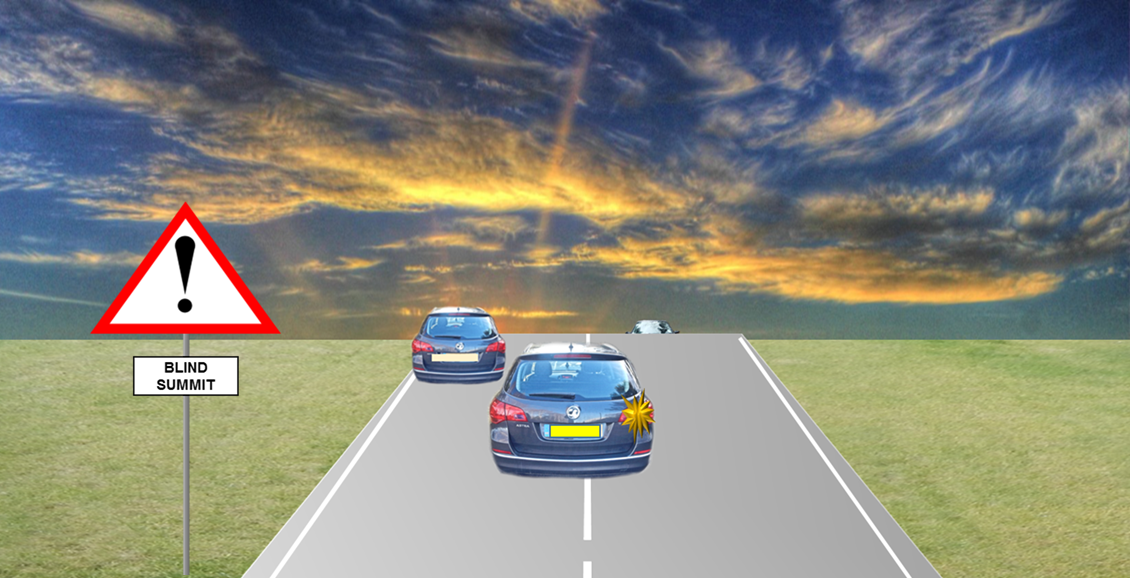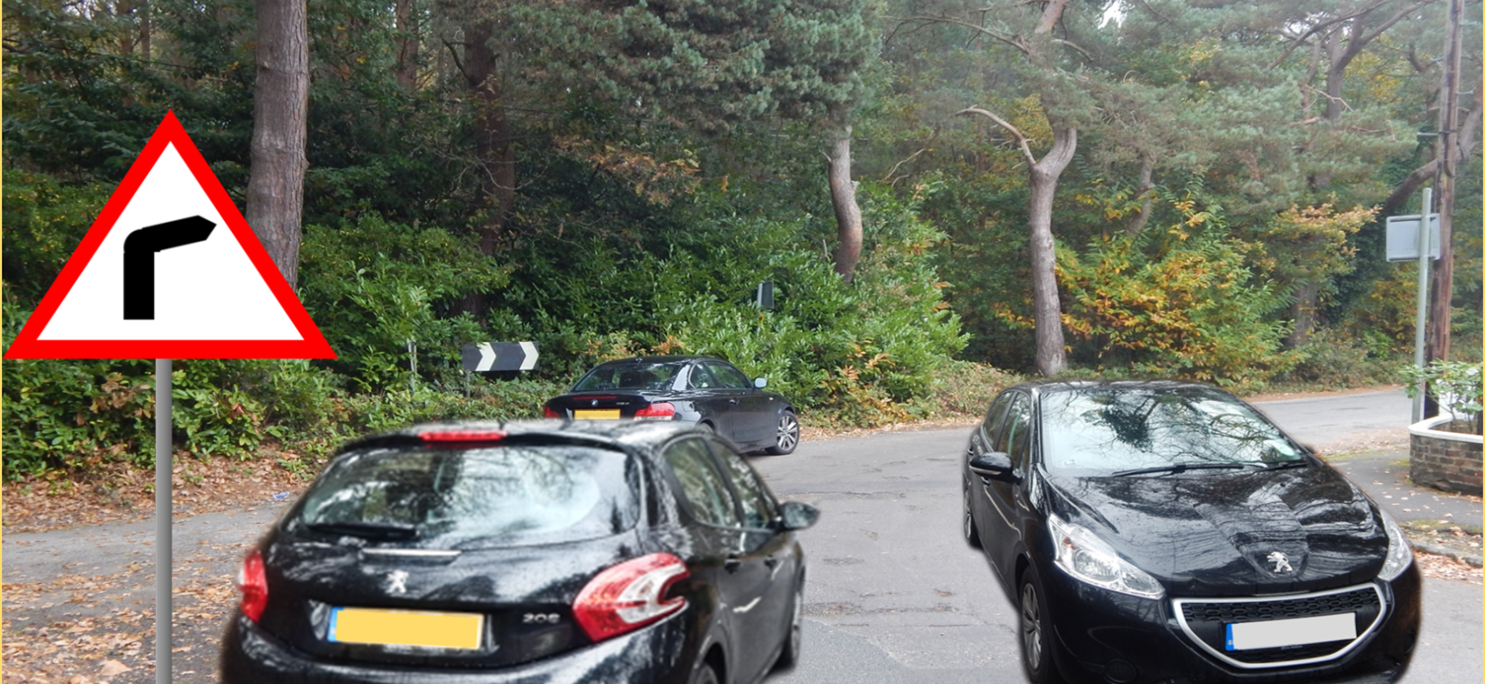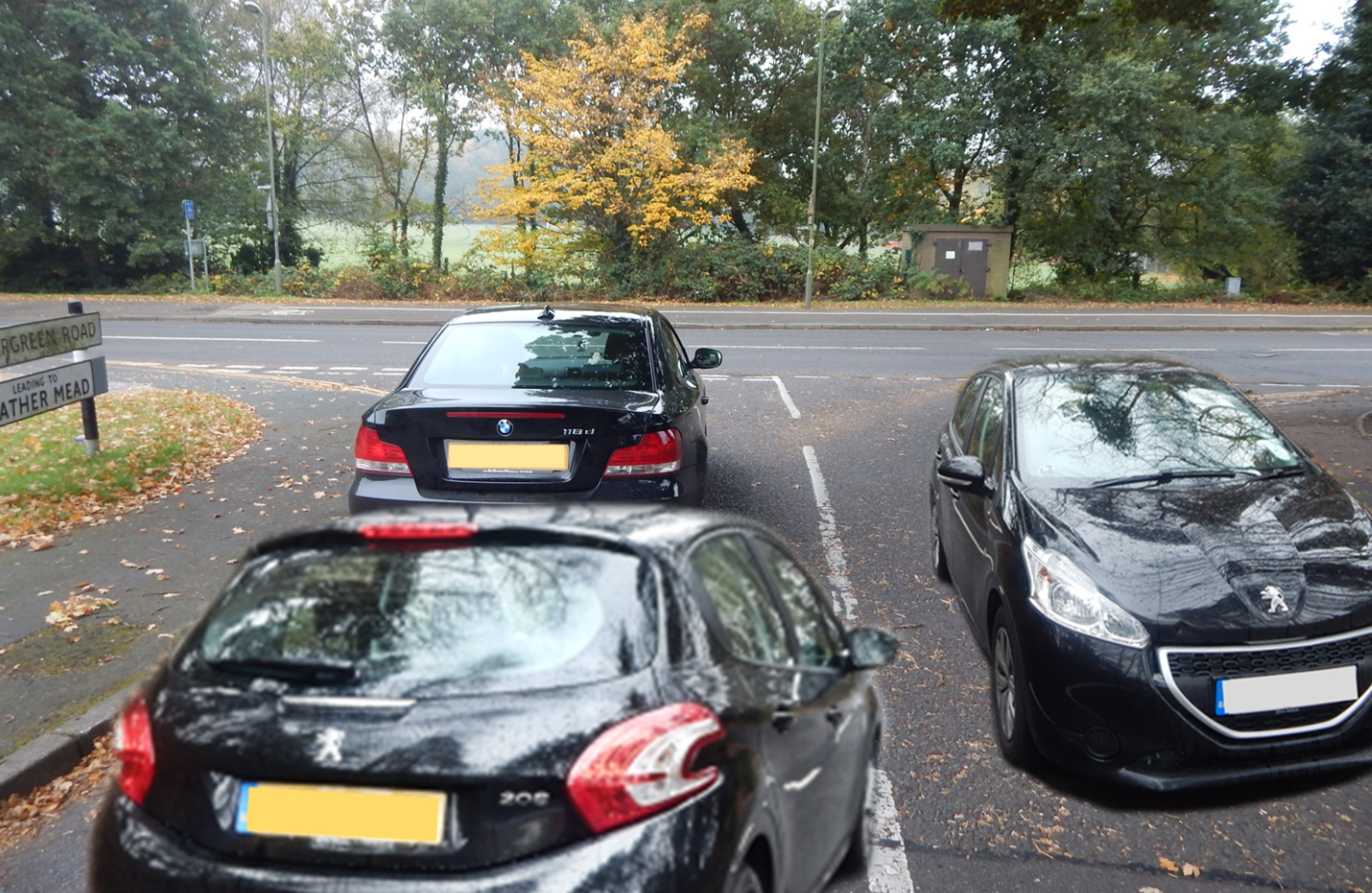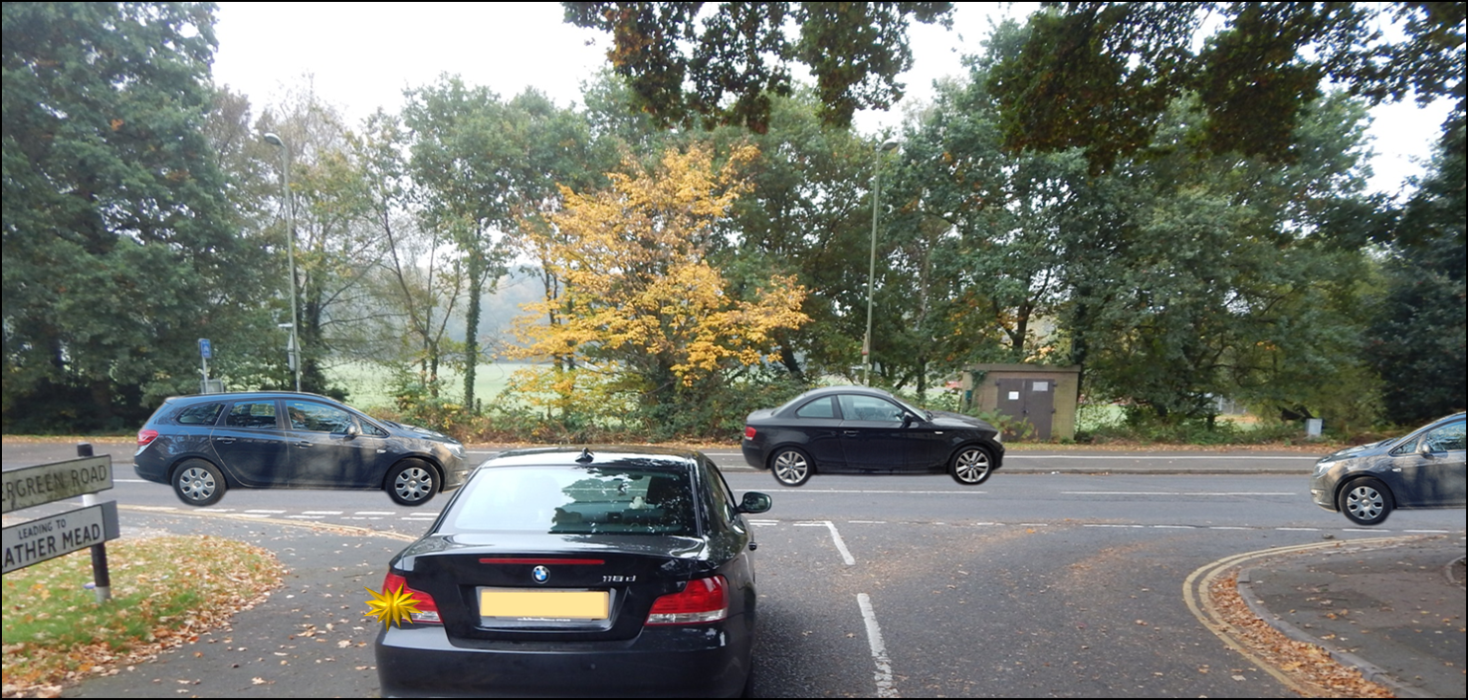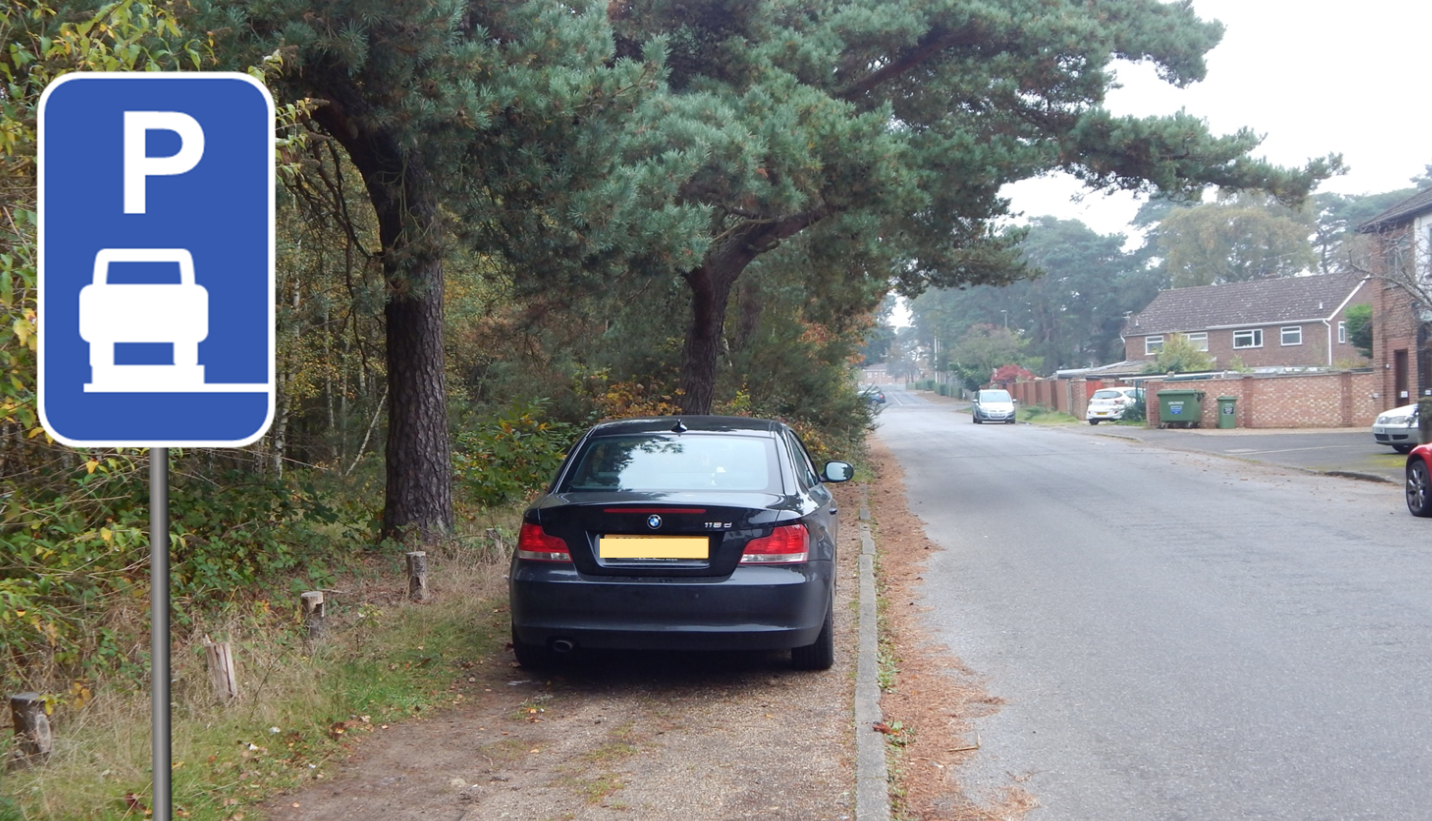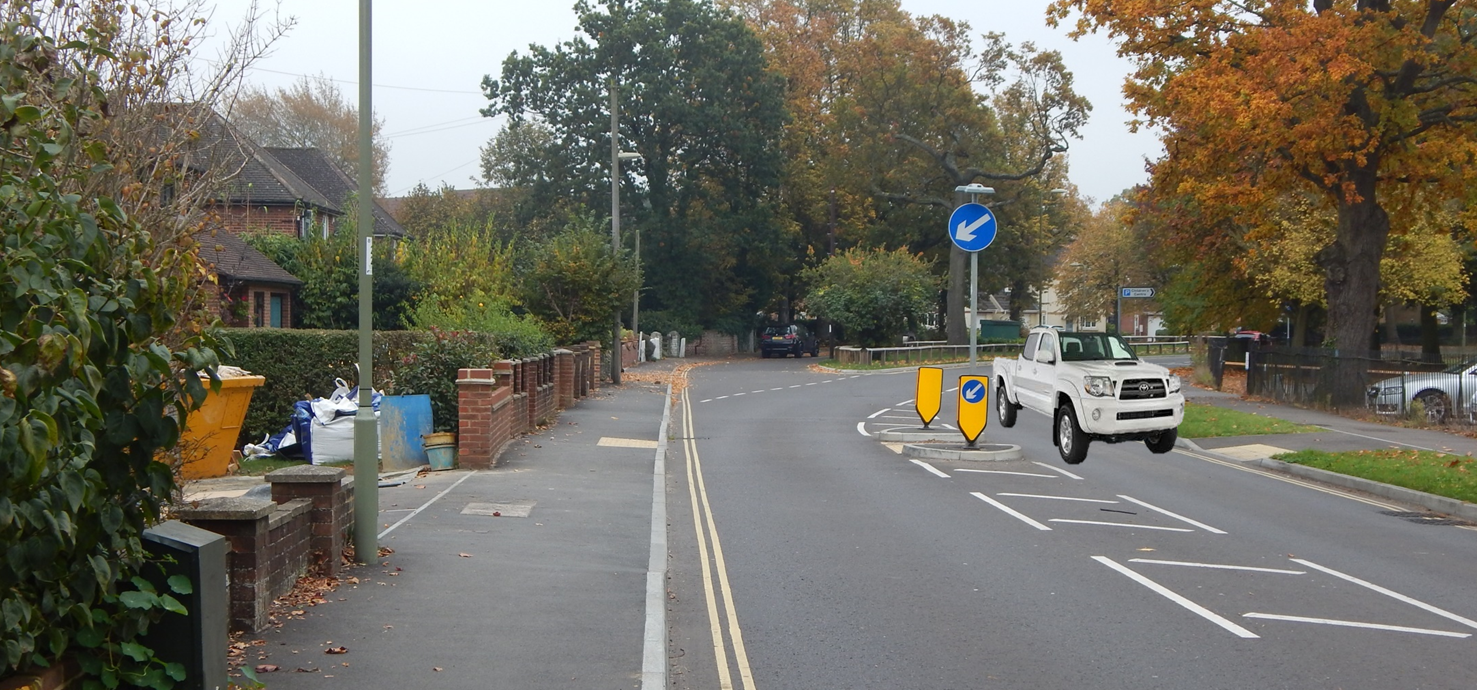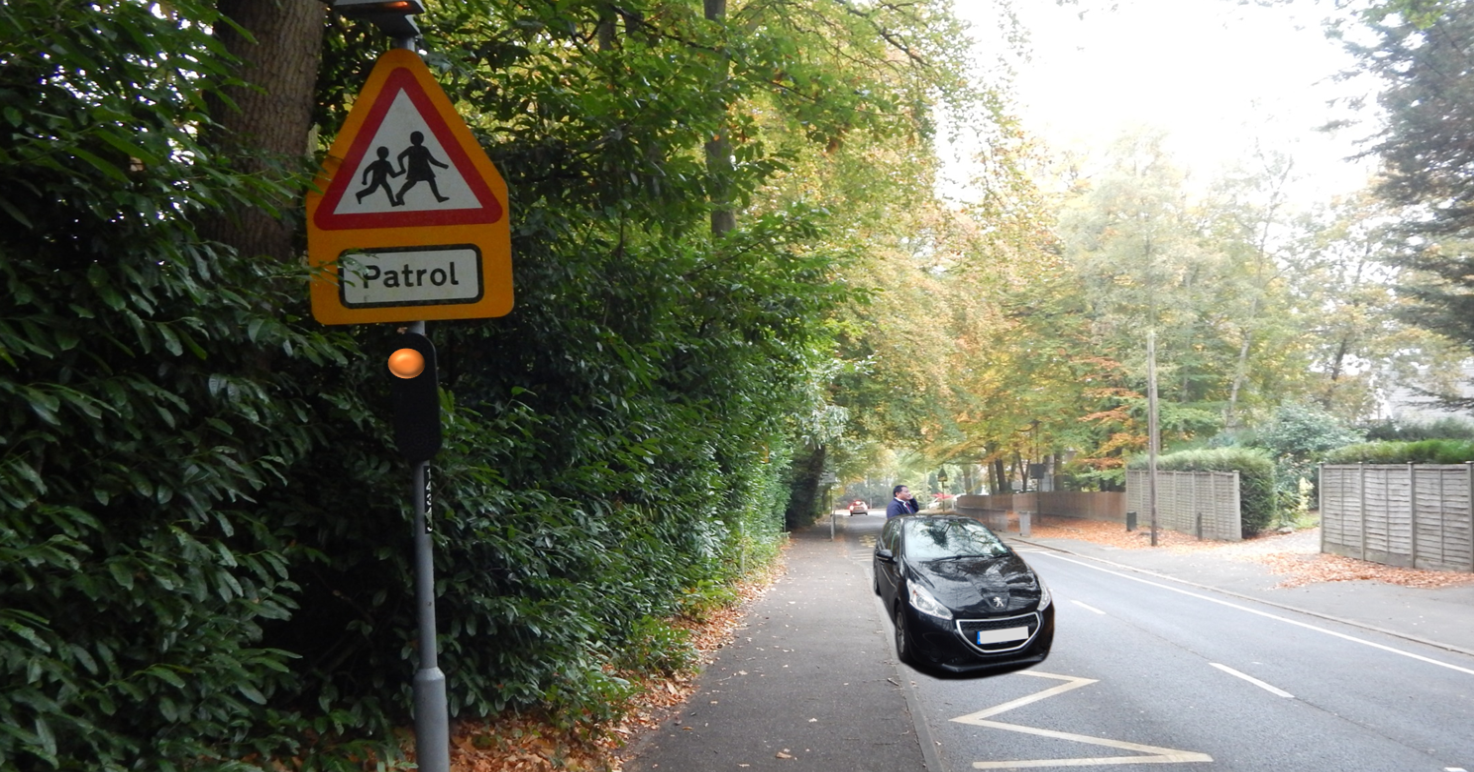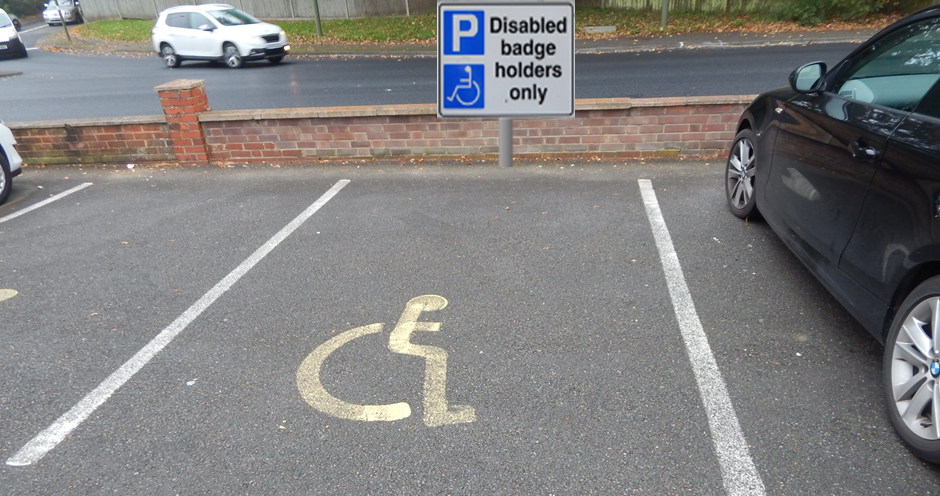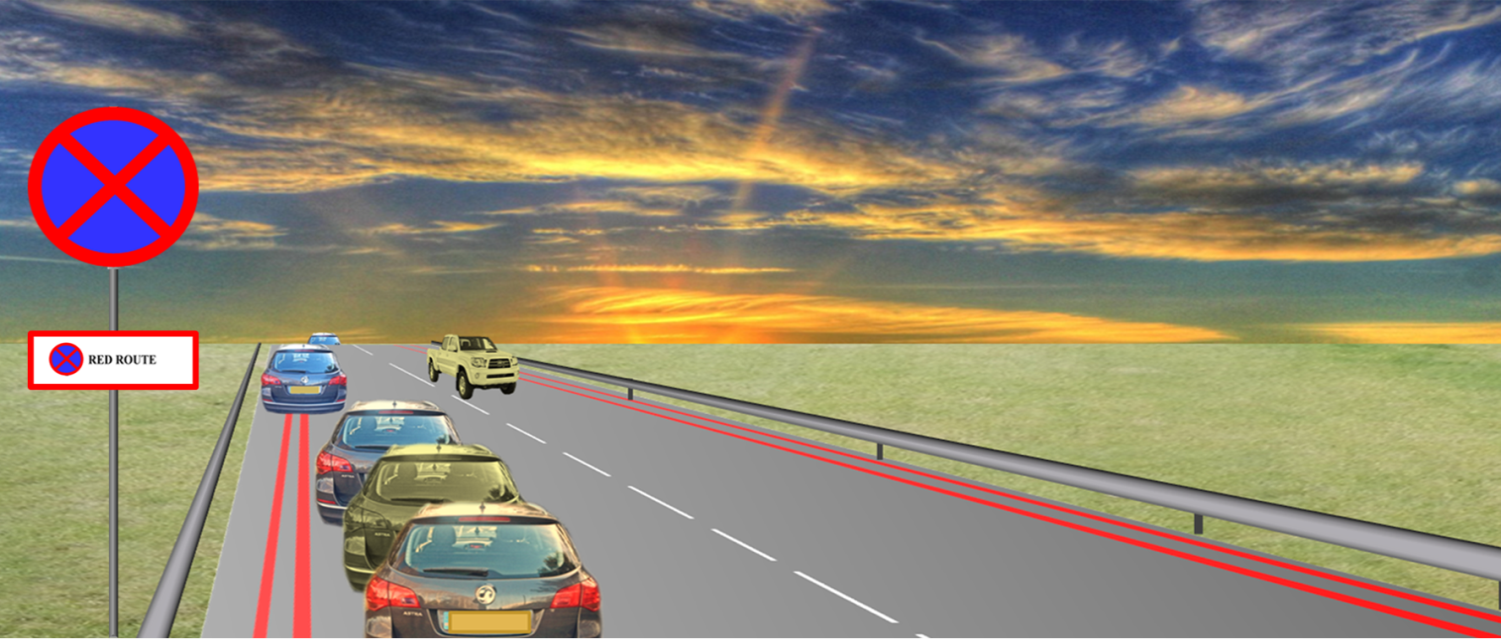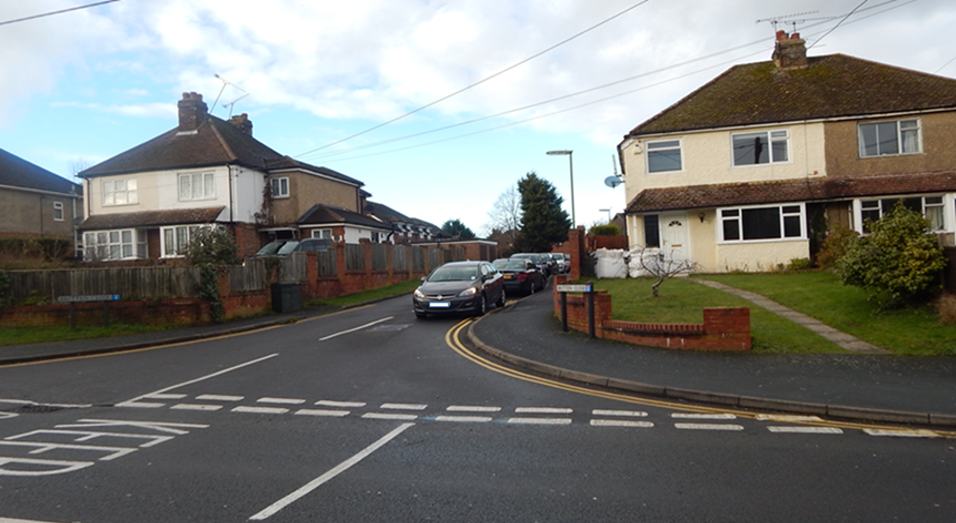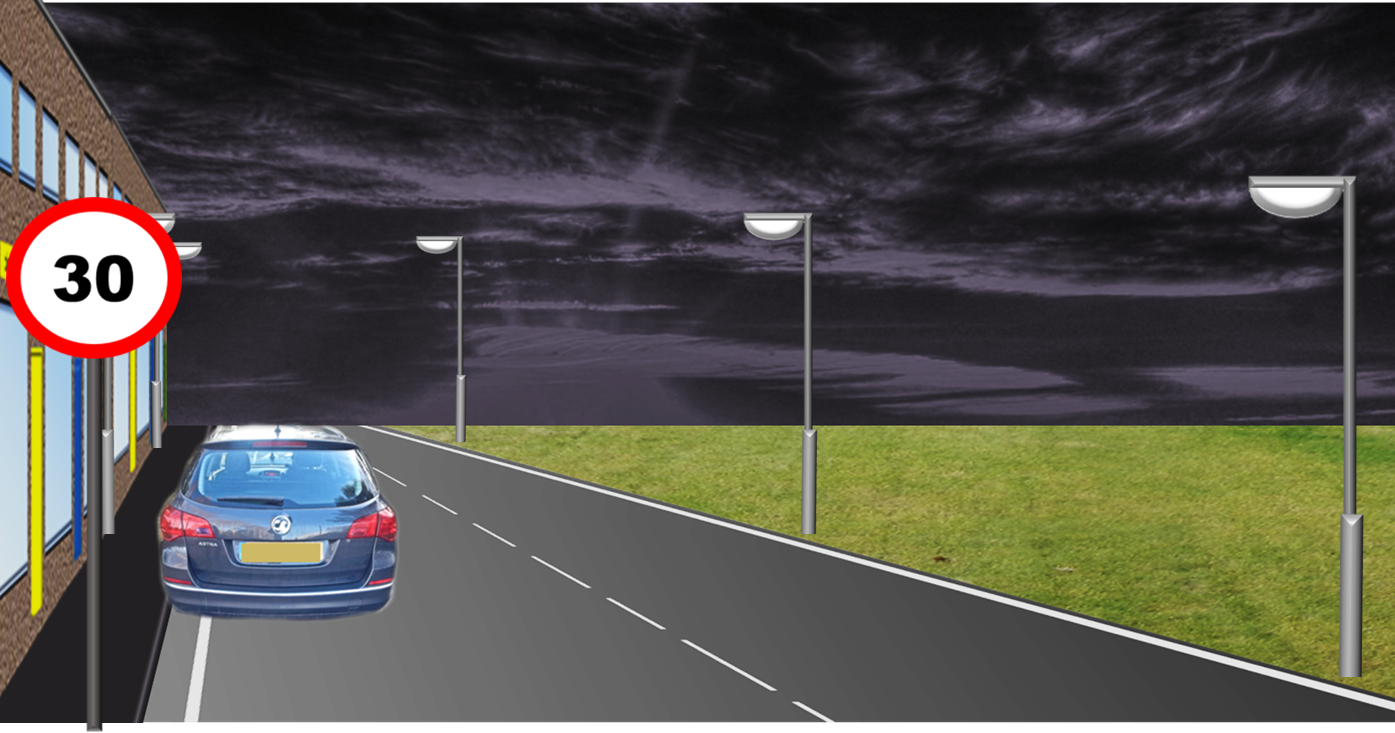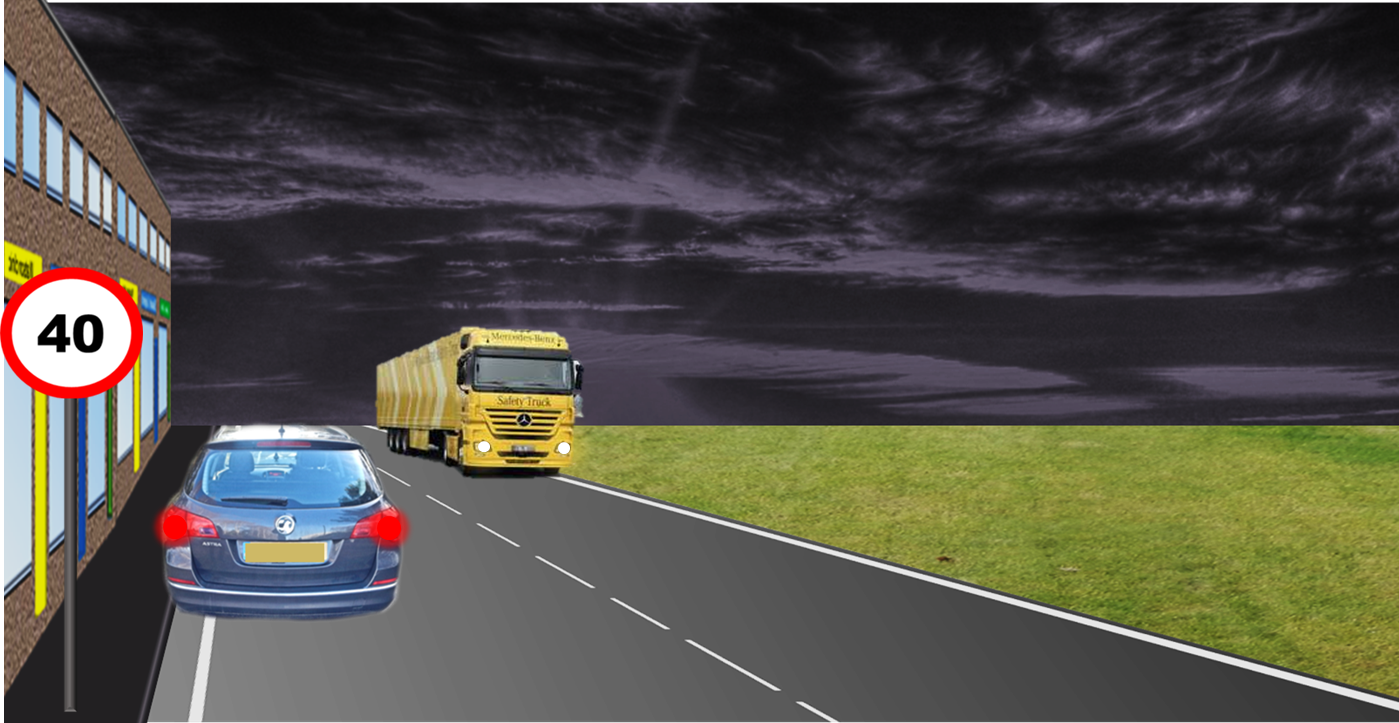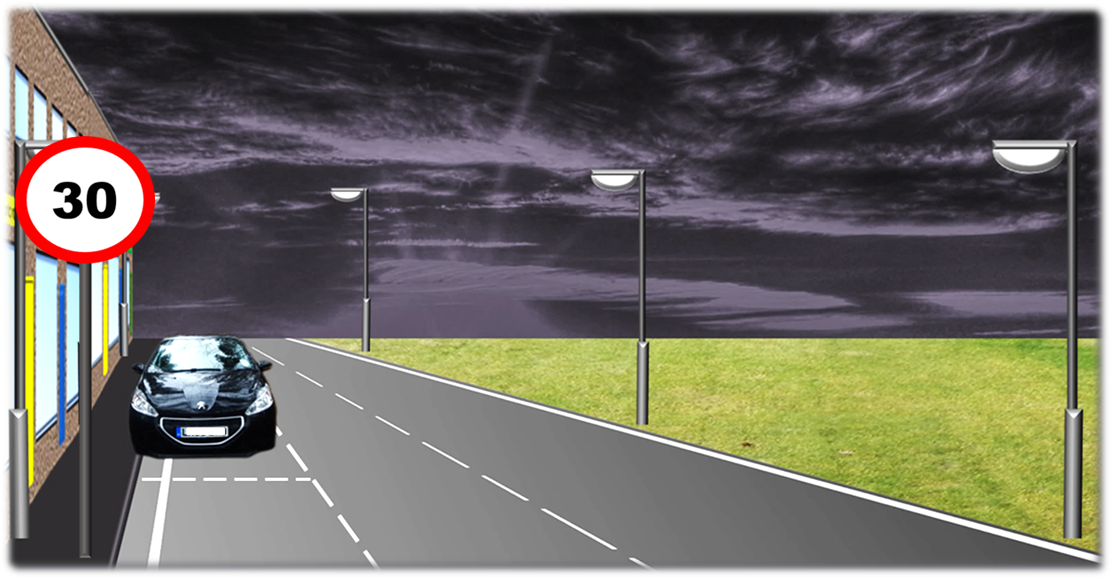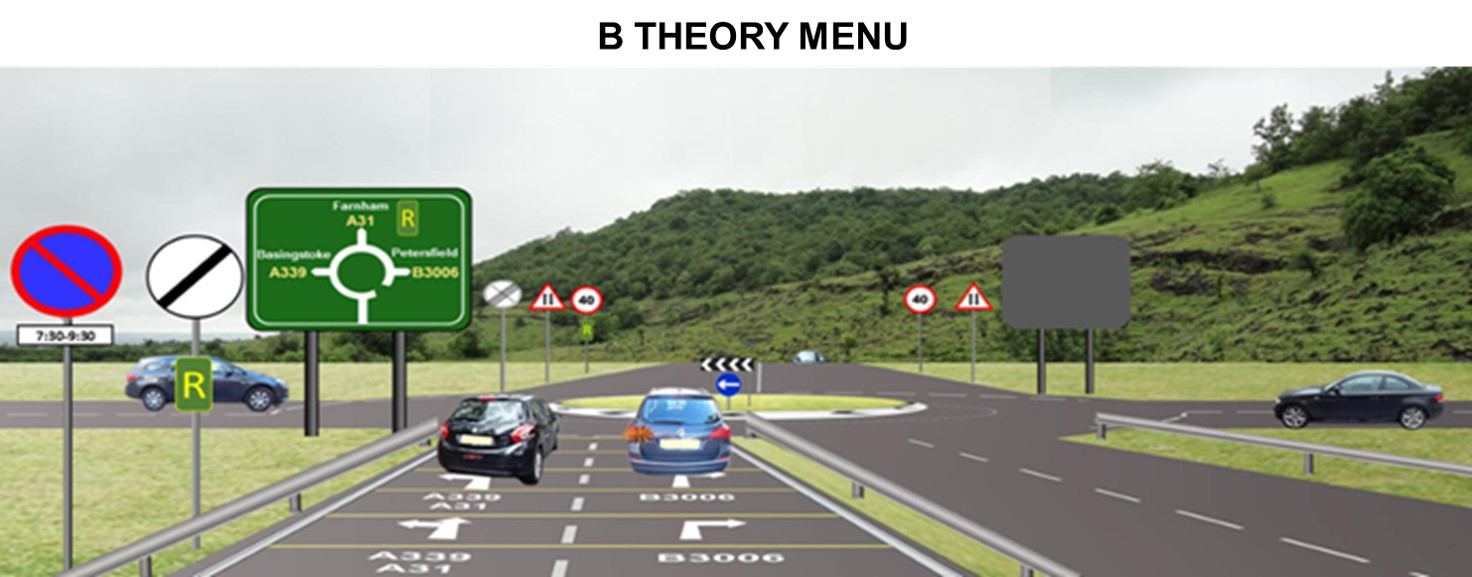PARKING

It is important when parking your vehicle you do so with overall consideration for other road users. By parking in an inappropriate place you can cause danger to passing and oncoming vehicles. Below are situations where you are not allowed to leave your vehicle.
Never stop or leave your vehicle on the brow of a hill. As you can see the overtaking vehicle cannot see clearly and has had to straddle the centre white line in order to pass the parked vehicle. This has caused danger to oncoming vehicles.
If you park up hill, as well as applying your handbrake, apply first gear. In addition if there is a kerb turn your wheels to the right. This will help secure your vehicle.
If you park facing downhill, apply reverse gear, in addition turn your front wheels into the kerb.
Never park on a bend as this will also cause problems to other road users. The highway code tells you to get well over to the left on approach to give yourself a better view of the road ahead. Even though the parked car has tried to park off the road as far as possible, it has still caused a problem.
The parked car in this situation has caused problems in both directions.
Cars approaching from the opposite direction will not expect vehicles in the middle of the road.
Never park within 10 metres of a junction. As you can see from this picture there is a black BMW parked on approach to this junction. This is causing problems for other motorists turning into and exiting the junction.
Never park opposite a junction. In this scenario the black car nearest to you is waiting to turn left. A car has parked opposite the junction.
The parked car has made it difficult for the vehicles using the main carriageway.
The vehicle waiting to turn left has the added problem of traffic coming from the left, they will be on the wrong side of the road.
Never park on the kerb or pavement unless authorised by an instructional sign. This is very important as it can obstruct a pedestrian from being able to use designated footpaths. In this scenario the sign displayed clearly shows you can park on the verge.
Never park opposite a traffic island.
Traffic islands should not be confused with roundabouts.
They have been designed to give safe sanctuary to pedestrians. If you park opposite or too near to the island you will cause a problem not only to pedestrians but to other road users.
Never park on the zig-zag lines on approach to any type of crossing.
In addition, the school crossing to the left also has flashing amber lights.
When in action the alternate amber lights will flash.
The biggest problem for you approaching this situation is finding someone parked on the yellow lines.
The parked car will obscure your view of the road and footpath ahead. Children will also not be able to see you.
You must never park in disabled bays unless you have a permit to do so.
The bays are clearly marked in car parks and on the road side. If you park in these bays without displaying a disabled badge you will risk prosecution. You are also inconveniencing the disabled.
It is important not to even partially park in or block these. You may prevent wheelchair access via a ramp or car doors being able to open fully.
You must also keep drop kerbs clear, they are there for a reason.
Red routes are designed to keep major roads clear at all times. If you park on them you risk prosecution and your vehicle could be impounded. In this picture a car has parked on double red lines. The sign indicates that it is a clearway and there should be no stopping at any time. Not only is the car driver ignoring a mandatory no stopping sign their inconsideration has caused congestion.
Some red routes are marked with single red lines. This sign tells you that you cannot stop between the hours shown.
It is a mandatory sign and you could risk your vehicle being impounded.
Red routes mean no stopping, yellow lines mean no waiting.
In addition to red routes, in urban areas you will find double yellow lines.
Double yellow lines mean no waiting is allowed. You will find double yellow lines where waiting will cause a problem to other road users.
in the picture below you can clearly see that double yellow lines have been painted. This will help keep the junction clear so that motorists turning in or out of the junction have a clear view.
Remember: The highway code and states that you are not allowed to park within ten metres of a junction.
In addition to double yellow lines you will also encounter single yellow lines. You may be able to wait in this situation, but you must also take notice of the traffic signs.
At night you must park with the flow of traffic which allows the red reflectors of your vehicle to be clearly seen by approaching traffic. If you find yourself in an unfortunate position or cannot be bothered to turn your vehicle around, you will need to put your parking lights on (side lights).
This picture above shows a 30 mph zone that is street lit, the car parked does not have to display parking lights.
The picture below shows the vehicle parked in an unlit 40 mph zone.
In this scenario you must turn your side or parking lights on. Certain vehicles do allow you to just put the offside parking light on, this is acceptable
In all parking situations that are legal, make sure that all valuables are locked away in the boot and cannot be seen by others.
Always try to park in a well lit area at night.
Make sure that if you are parking in a controlled area (parking meters) you must display clearly the relevant tickets.


